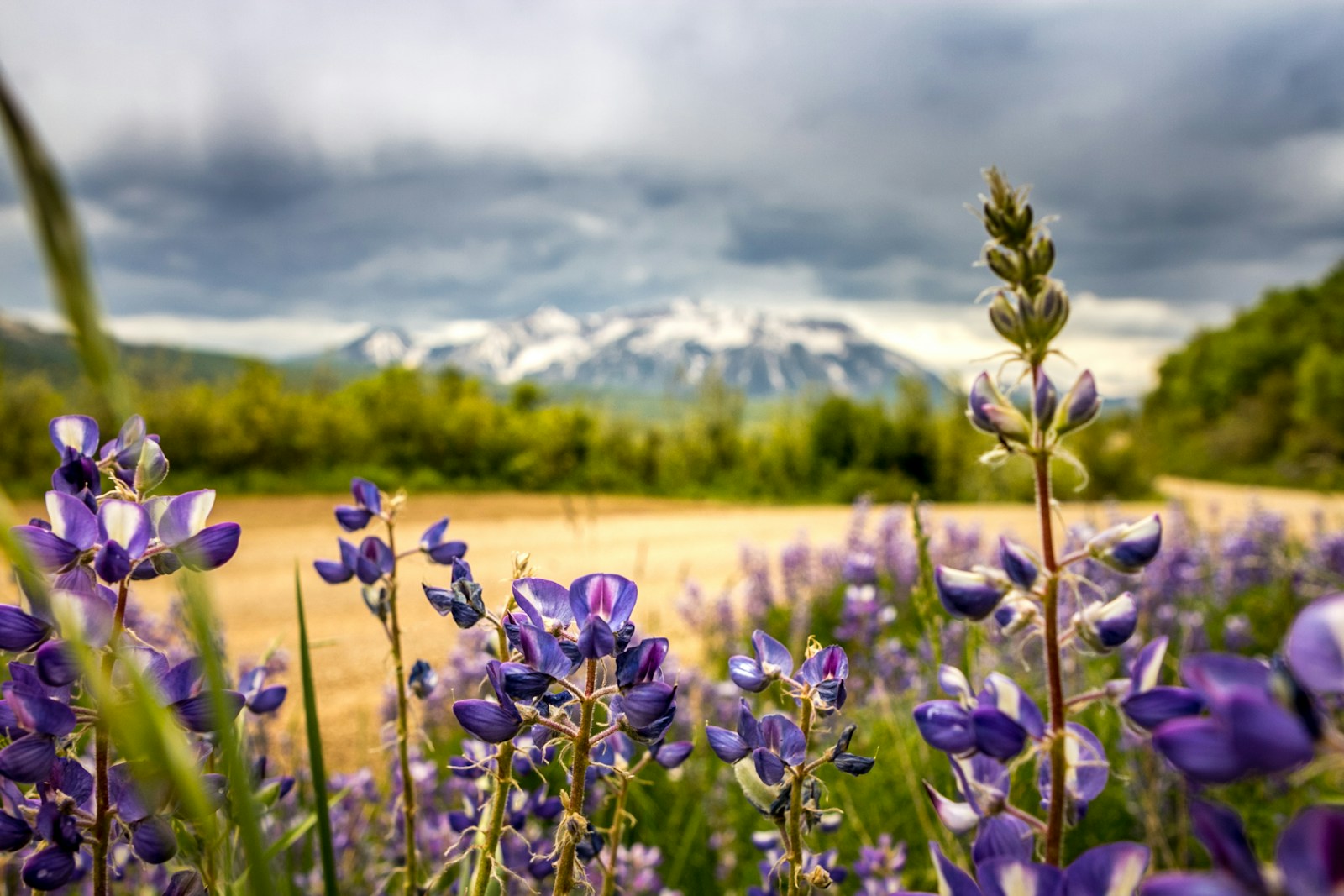As winter’s chill gives way to spring’s gentle warmth, an extraordinary transformation takes place across America’s national parks. Dormant landscapes burst into vibrant tapestries of color as wildflowers emerge in spectacular displays that captivate visitors from around the world. These fleeting natural exhibitions—ranging from delicate desert blooms to alpine meadow carpets—offer some of nature’s most inspiring moments. Spring wildflower season represents not just beauty, but the resilience of ecosystems and the intricate relationships between plants, pollinators, and their environments. For nature enthusiasts, photographers, and anyone seeking connection with seasonal rhythms, these wildflower destinations provide unforgettable experiences that showcase our national parks at their most enchanting.
Great Smoky Mountains National Park: A Symphony of Spring Ephemerals
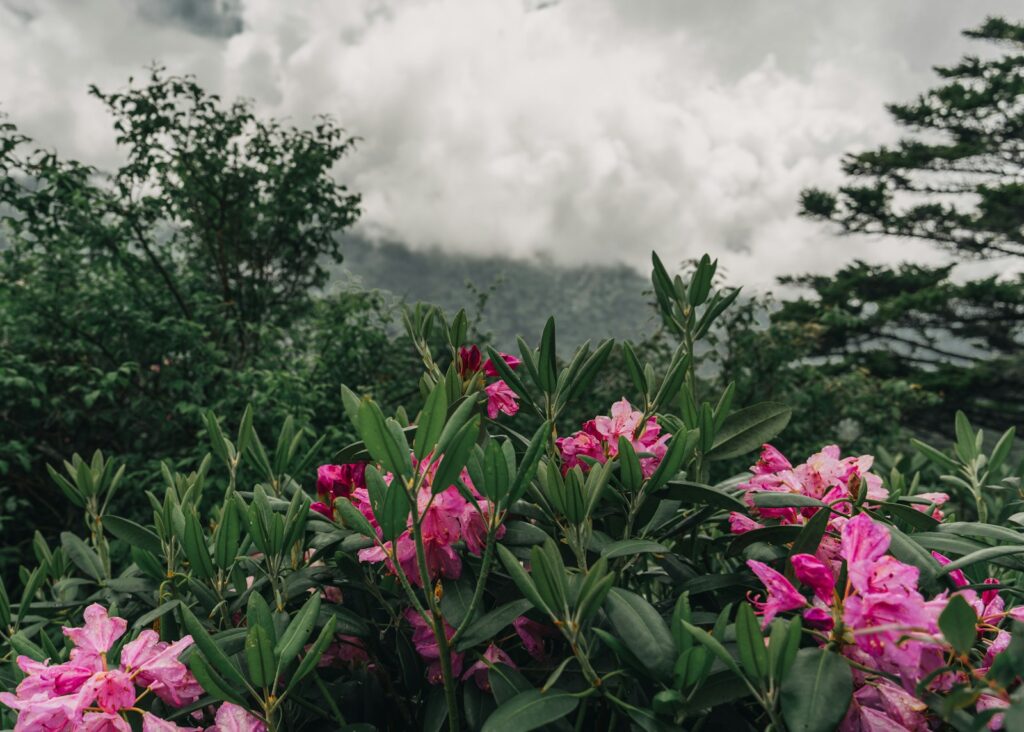
Straddling the border between Tennessee and North Carolina, Great Smoky Mountains National Park hosts what many consider America’s premier spring wildflower display. The park’s rich biodiversity—with over 1,500 flowering plant species—creates a phenomenon botanists refer to as “Spring Ephemeral Season,” when woodland flowers race to bloom before the forest canopy leafs out and blocks sunlight. Beginning in late February at lower elevations and continuing through May, visitors can witness trillium, spring beauty, phacelia, crested dwarf iris, and dozens more species creating stunning forest floor mosaics. The park’s annual Spring Wildflower Pilgrimage, typically held in April, offers guided walks with expert naturalists who reveal the fascinating ecological relationships and cultural histories behind these beloved blooms. For the most dramatic displays, explore the Porters Creek Trail, Chestnut Top Trail, or the River Trail near Gatlinburg, where entire hillsides transform into floral wonderlands.
Death Valley National Park: Desert Superblooms
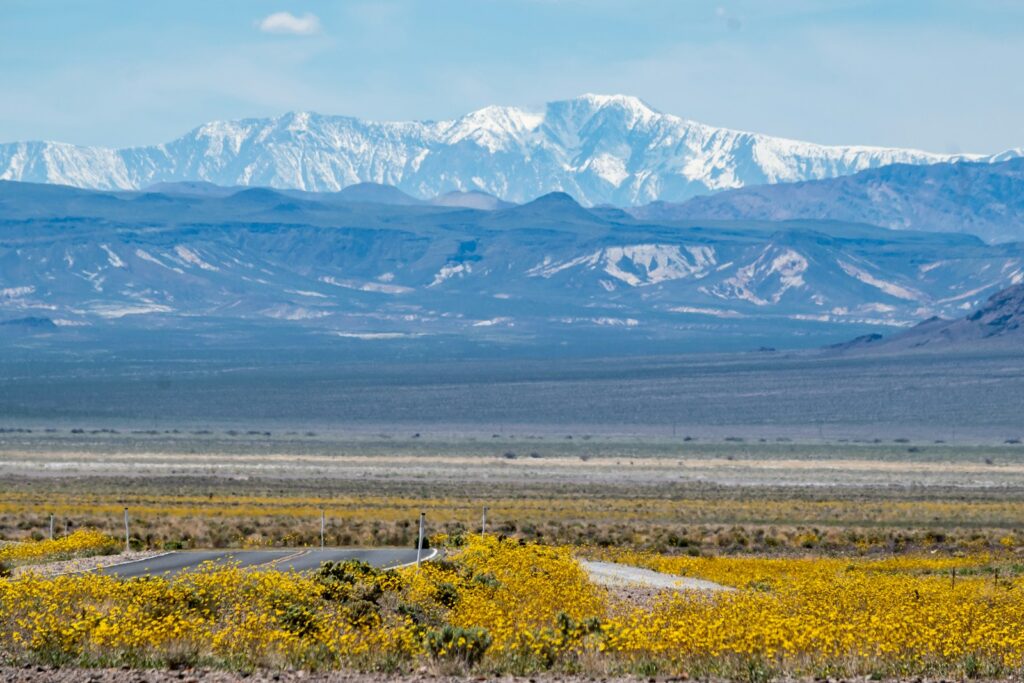
Death Valley National Park might seem an unlikely wildflower destination given its reputation as one of the hottest, driest places on Earth, but this harsh landscape produces some of the most spectacular wildflower displays imaginable during rare “superbloom” events. When winter rainfall arrives in perfect amounts and timing—typically after El Niño weather patterns—the desert floor erupts in sweeping carpets of desert gold, desert five-spot, phacelia, and desert dandelion from late February through April. The 2005, 2016, and 2019 superblooms drew thousands of visitors to witness these extraordinary transformations, with fields of flowers stretching to the horizon against dramatic mountain backdrops. Even in non-superbloom years, the park offers reliable spring wildflower viewing in places like Furnace Creek, Badwater Basin, and the alluvial fans near Jubilee Pass. These desert blooms represent remarkable evolutionary adaptations, with seeds capable of remaining dormant for decades until perfect conditions arise—a reminder of life’s tenacity in even the harshest environments.
Shenandoah National Park: Eastern Woodland Splendor
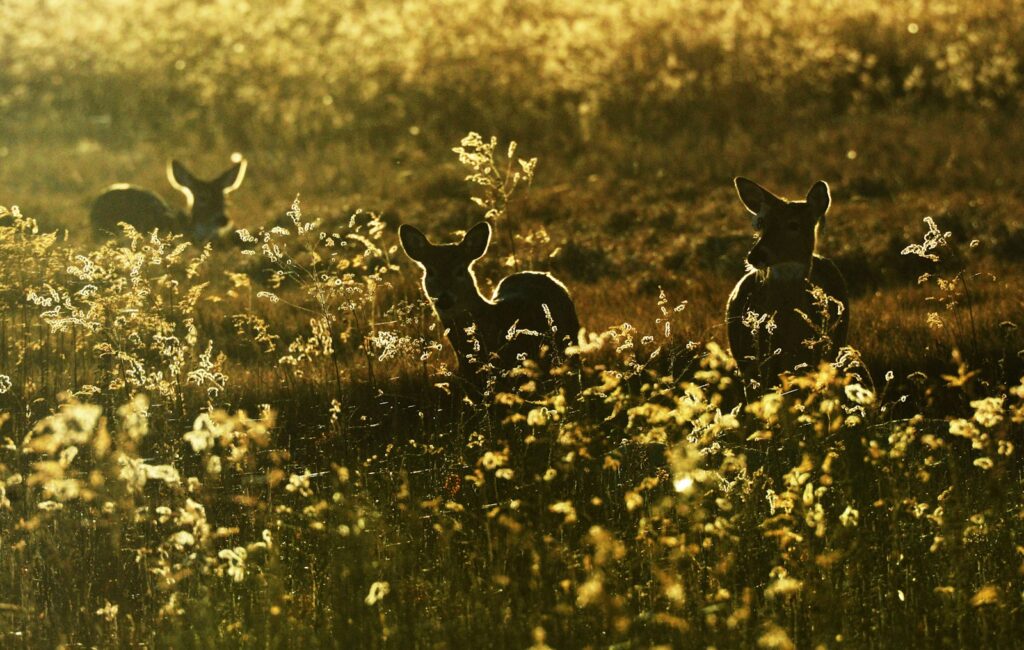
Virginia’s Shenandoah National Park offers one of the East Coast’s most accessible and diverse spring wildflower experiences along its famous Skyline Drive and extensive trail system. The park’s varied elevations create a prolonged blooming season from March through June, with early spring bringing bloodroot, trout lily, and hepatica, followed by spectacular displays of wild geranium, woodland phlox, and the park’s signature large-flowered trillium. The secluded hollows and stream corridors like Dark Hollow Falls Trail and Rose River Loop provide ideal microclimates for these delicate blooms, while open areas showcase azaleas and mountain laurel later in the season. What makes Shenandoah particularly special is how accessible its wildflower viewing opportunities are—many spectacular displays can be enjoyed from roadside overlooks or on short, family-friendly trails. The park’s Big Meadows area represents a rare high-elevation meadow ecosystem that hosts entirely different plant communities than the surrounding forests, including spectacular stands of milkweed that attract monarch butterflies during their migration.
Antelope Valley California Poppy Reserve: Orange Horizons
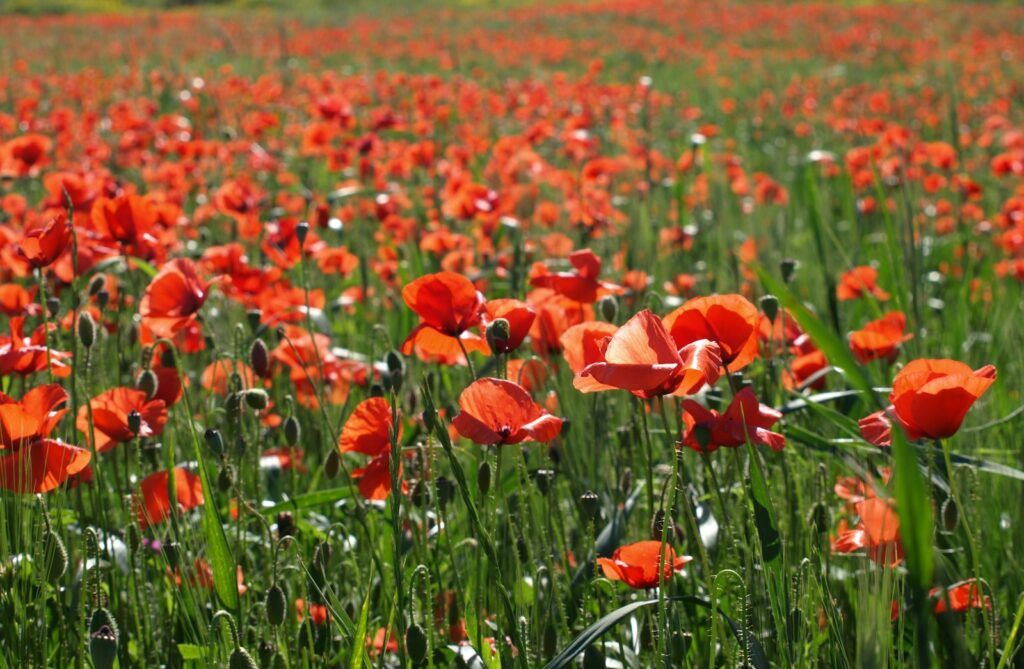
While technically a state natural reserve rather than a national park, no discussion of spring wildflower destinations would be complete without mentioning the extraordinary Antelope Valley California Poppy Reserve near Los Angeles. This 1,800-acre protected area hosts North America’s most consistent and concentrated blooms of California’s state flower, the golden poppy (Eschscholzia californica). From mid-February through May, the rolling hills transform into an almost surreal landscape of vibrant orange that can be visible for miles. Beyond the signature poppies, visitors can spot owl’s clover, lupine, goldfield, cream cups, and coreopsis creating multicolored patterns across the landscape. The reserve’s seven miles of trails wind through the prime viewing areas, with the Tehachapi Vista Point offering particularly dramatic panoramas that photographers travel worldwide to capture. What many visitors find most remarkable is the dynamic nature of the blooms—the poppies open in mid-morning and close in late afternoon or during cloudy conditions, creating an ever-changing display that rewards return visits at different times of day.
Olympic National Park: Coastal to Alpine Diversity
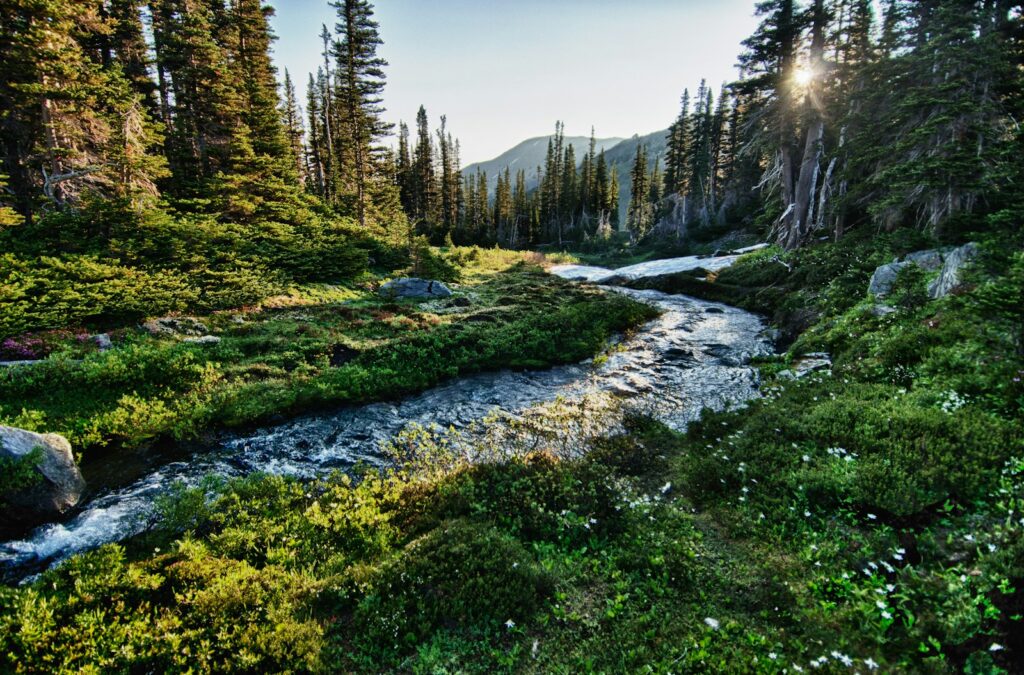
Washington’s Olympic National Park offers perhaps the most diverse wildflower viewing opportunities of any national park, thanks to its extraordinary ecological range from coastal beaches through temperate rainforest to alpine meadows. The park’s famous Hurricane Ridge area becomes a wildflower paradise from late June through August, when subalpine meadows showcase paintbrush, lupine, avalanche lily, and spectacular displays of broadleaf arnica that transform entire slopes into fields of gold. Lower elevations begin blooming much earlier, with the Quinault Rainforest’s understory featuring trillium and salmonberry blossoms by April, while coastal areas near Kalaloch showcase beach strawberry and shore lupine by May. This remarkable elevation gradient means visitors can essentially “chase” the spring bloom season for nearly four months by starting at sea level and gradually working up to the park’s higher reaches. The Obstruction Point Road area offers particularly accessible high-country wildflower viewing, with relatively easy trails leading to meadows where photographers often capture dramatic images of flowers against the backdrop of the Olympic Mountains.
Glacier National Park: Alpine Meadow Majesty
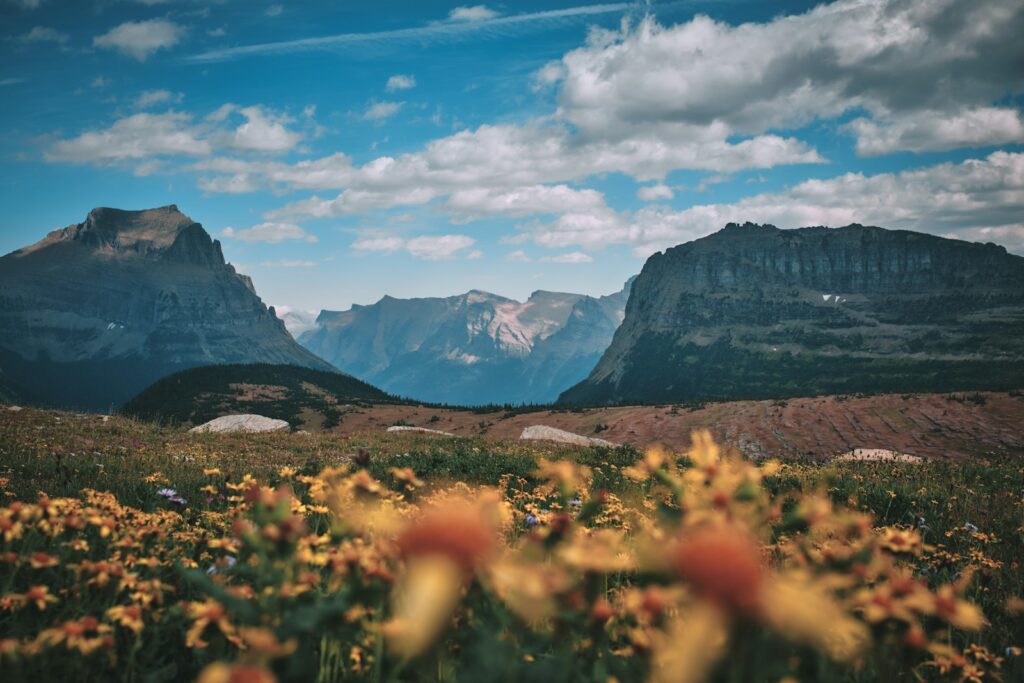
Montana’s Glacier National Park presents one of America’s most dramatic and concentrated wildflower displays, compressed into a short but spectacular season from mid-July through early August. The park’s famous Logan Pass area along the Going-to-the-Sun Road becomes an extraordinary botanical showcase when snow finally melts, revealing meadows erupting with beargrass, glacier lily, Indian paintbrush, and more than a dozen species of pentstemon and aster. What makes Glacier’s display particularly special is the backdrop—these vibrant blooms appear against a landscape of towering peaks, glacial valleys, and crystal lakes, creating scenes that have inspired generations of nature photographers. The Hidden Lake Overlook and Highline Trail offer relatively accessible viewing of these alpine gardens, though visitors should respect trail boundaries as these fragile ecosystems are easily damaged. Bear Grass (Xerophyllum tenax) provides perhaps the most iconic Glacier wildflower image—its tall white flowering stalks appear in massive synchronized blooms every 5-7 years, covering entire mountainsides in what looks like a field of elegant white torches.
Big Bend National Park: Desert Diversity
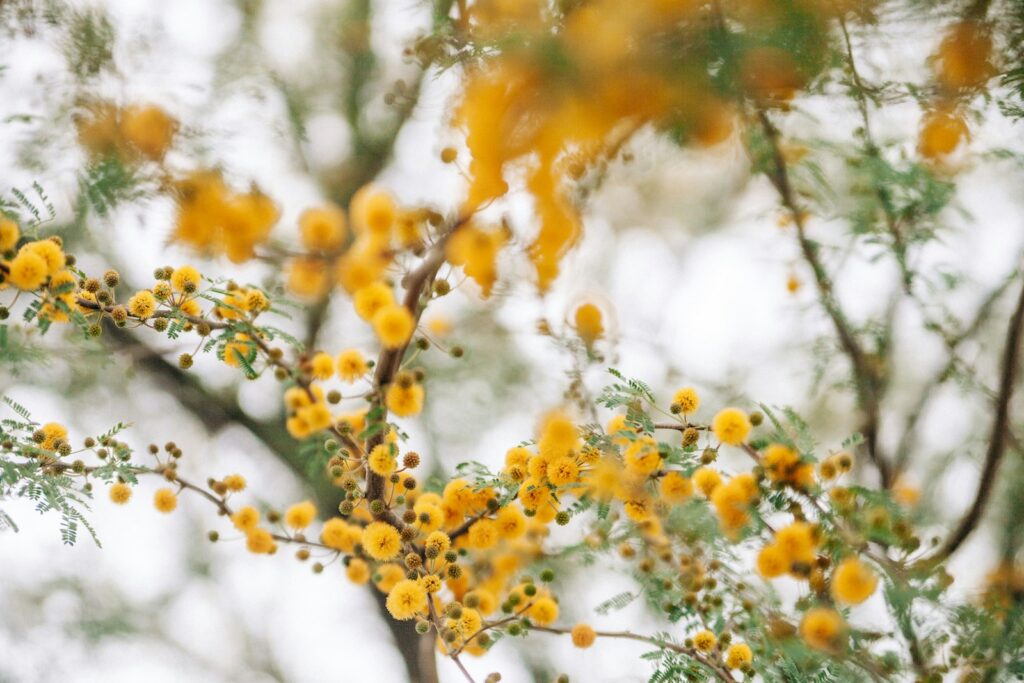
Texas’s Big Bend National Park offers a surprising and diverse spring wildflower season that typically peaks between mid-February and early April, depending on winter rainfall patterns. The park’s remarkable elevation range—from the Rio Grande at 1,800 feet to Emory Peak at 7,832 feet—creates multiple bloom seasons and extraordinary plant diversity with over 1,200 plant species, including 60 varieties of cactus. The desert portions explode with color first, as bluebonnets (a desert-adapted cousin of the famous Texas state flower), desert marigold, and ocotillo send up their flaming red spikes against the rugged Chisos Mountains backdrop. Higher elevations follow with entirely different plant communities, including Mexican buckeye and fragrant cenizo. What makes Big Bend particularly special is how its wildflowers represent a biological crossroads where species from the Chihuahuan Desert, Rocky Mountains, and Mexican Sierra Madre converge in combinations found nowhere else on earth. The Ross Maxwell Scenic Drive and Dagger Flat areas consistently offer excellent viewing opportunities even in years with modest rainfall.
Rocky Mountain National Park: Summer Alpine Gardens
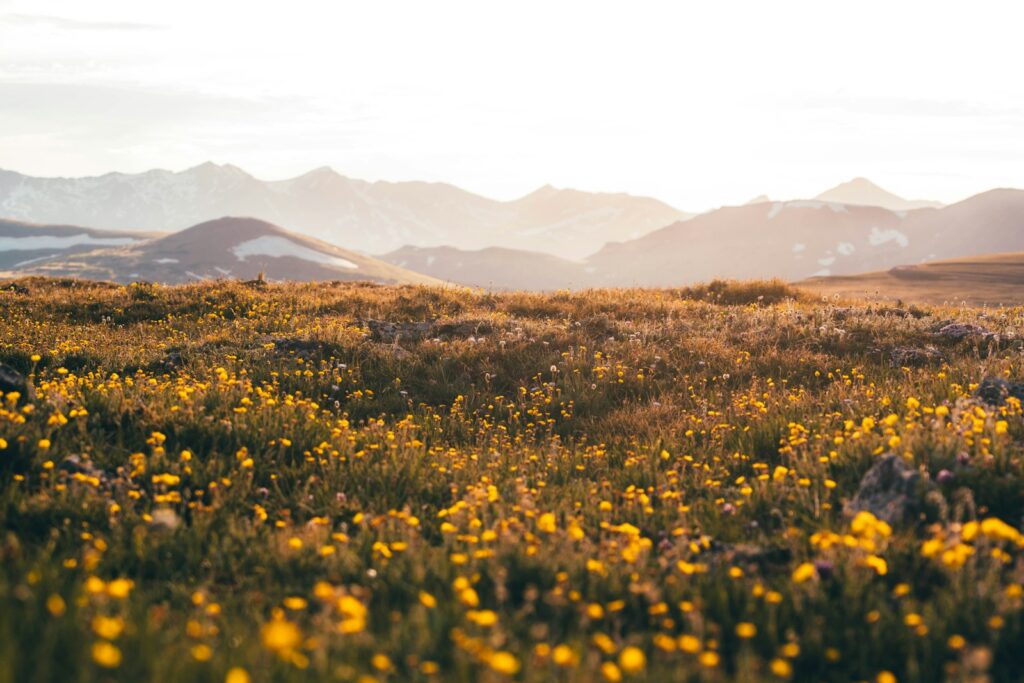
Colorado’s Rocky Mountain National Park experiences a relatively late but spectacular wildflower season, with peak displays typically occurring from late June through early August as winter snowpack finally releases its grip on higher elevations. The park’s alpine regions above 11,000 feet feature extraordinary concentrations of colorful blooms adapted to the harsh high-altitude conditions, including alpine forget-me-not, sky pilot, alpine sunflower, and the iconic columbine—Colorado’s state flower. These hardy species must complete their entire life cycle during the brief 60-90 day growing season, resulting in concentrated, vibrant displays that blanket meadows with colors that seem almost artificially vivid against the dramatic rocky backdrop. The accessible Alpine Visitor Center area and the trail to Mount Ida offer spectacular viewing opportunities, while lower elevation meadows like Moraine Park showcase entirely different plant communities including wild iris, pentstemon, and mariposa lily. What makes Rocky Mountain’s wildflower displays particularly special is how they’re often framed by dramatic weather, with afternoon thunderstorms creating dramatic lighting conditions that photographers particularly prize.
Craters of the Moon National Monument: Volcanic Garden
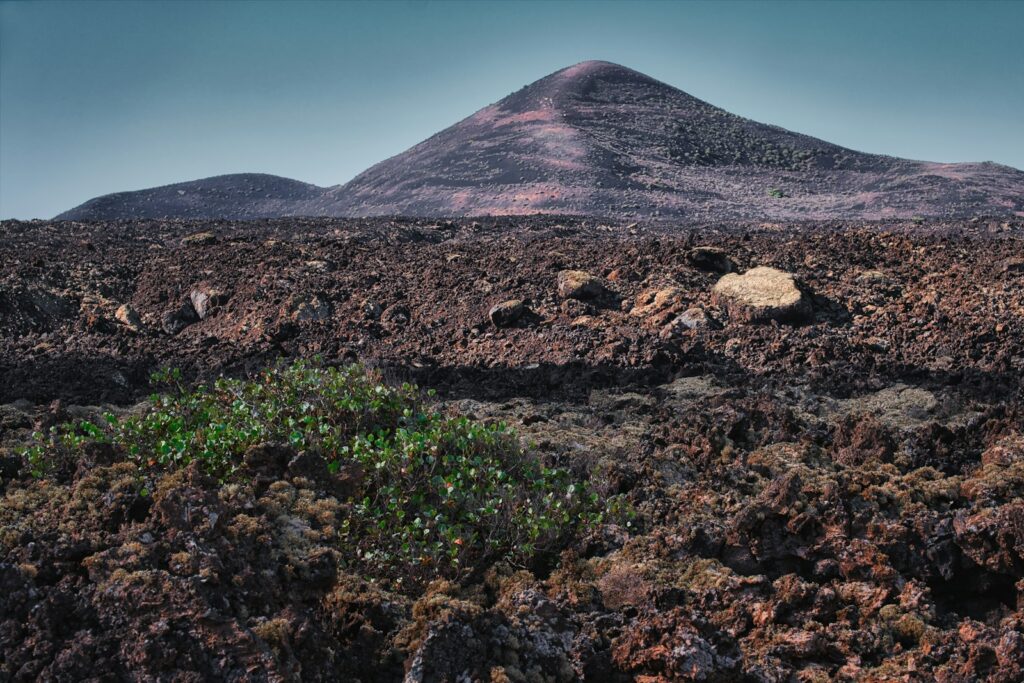
Idaho’s otherworldly Craters of the Moon National Monument presents one of America’s most surprising wildflower displays as spring transforms this stark volcanic landscape into a garden of improbable beauty. From late May through early July, plants specially adapted to the harsh conditions send up blooms from cracks and crevices in the black lava, creating dramatic color contrasts that emphasize the flowers’ delicate beauty. Dwarf buckwheat, bitterroot, paintbrush, and sticky geranium somehow thrive in what appears to be barren terrain, demonstrating remarkable evolutionary adaptations to extract moisture and nutrients from seemingly inhospitable volcanic soil. The monument’s cinder gardens and spatter cones host entirely different plant communities than the nearby sagebrush plains, creating distinct microenvironments within short distances. The North Crater Flow Trail and Inferno Cone viewpoint offer particularly accessible viewing of these volcanic garden displays, while photography is especially rewarding in early morning when low-angle light enhances the contrast between dark lava and vibrant blooms.
Mount Rainier National Park: Subalpine Spectacle
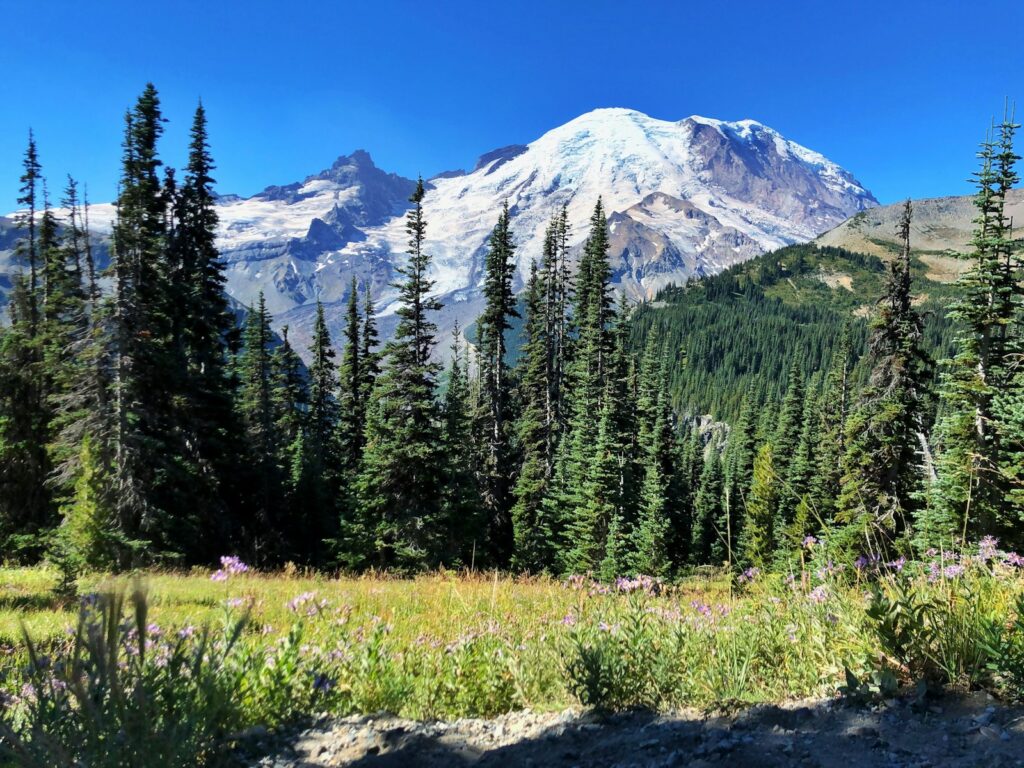
Washington’s Mount Rainier National Park hosts perhaps the most photographed wildflower meadows in America, with the aptly named Paradise area living up to its designation when subalpine flowers reach peak bloom from mid-July through August. These famous meadows showcase lupine, valerian, paintbrush, aster, and dozens more species creating sweeping carpets of color beneath the mountain’s iconic snow-capped profile. The timing and progression of blooms follow the retreating snowline in “waves” up the mountain, beginning with avalanche lilies that often push up through melting snow patches, creating ethereal scenes of white flowers emerging from icy crystal. The accessible Skyline Trail and Paradise Meadow loops offer extraordinary viewing opportunities suitable for most visitors, while photographers often venture to Reflection Lakes to capture the famous mirror-image of Mount Rainier framed by meadows of lupine and paintbrush. The park’s extraordinary wildflower displays inspired some of the earliest conservation efforts in the Pacific Northwest, as advocates fought to protect these meadows from grazing and development—a legacy that continues to benefit visitors today.
Channel Islands National Park: Coastal Bloom
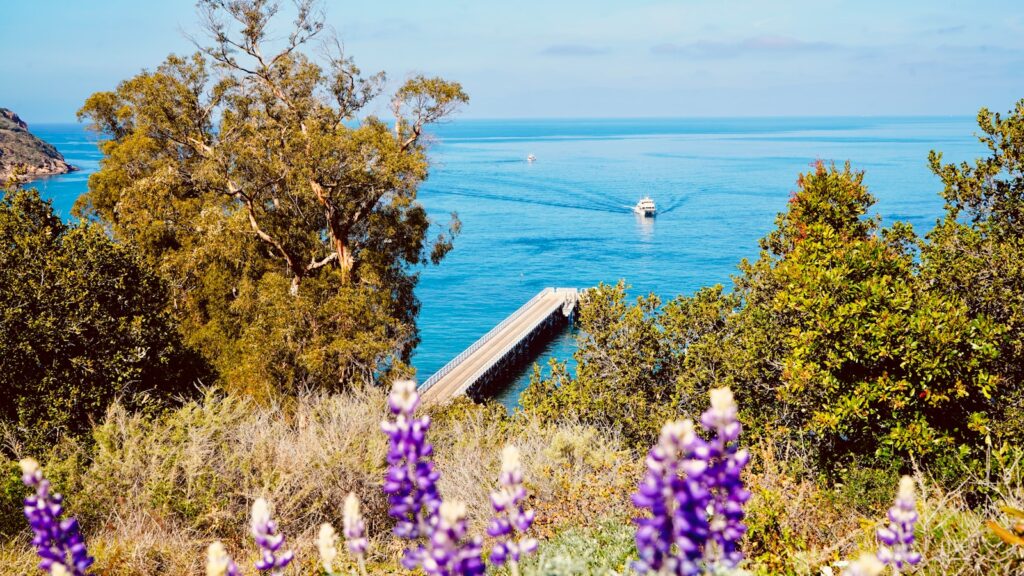
California’s Channel Islands National Park offers one of the West Coast’s most unique wildflower experiences, with island-specific plant communities that have evolved in isolation from mainland species. From February through May, these rugged islands off the Santa Barbara coast showcase extraordinary displays of island wildflowers, including many endemic species found nowhere else on Earth. Anacapa and Santa Cruz islands feature dramatic coastal bluff gardens where giant coreopsis—resembling something from a Dr. Seuss illustration with their thick trunks and bright yellow daisy-like flowers—create surreal landscapes against ocean backdrops. The islands’ isolation has protected many plant communities from development and non-native species, allowing visitors to experience something approximating the original California coastal ecosystem before European settlement. Access requires a boat trip from Ventura Harbor, adding to the adventure while limiting crowds, and the effort rewards visitors with opportunities to see island-specific subspecies of paintbrush, poppy, and buckwheat that have adapted to the unique maritime conditions.
Redwood National and State Parks: Forest Floor Treasures
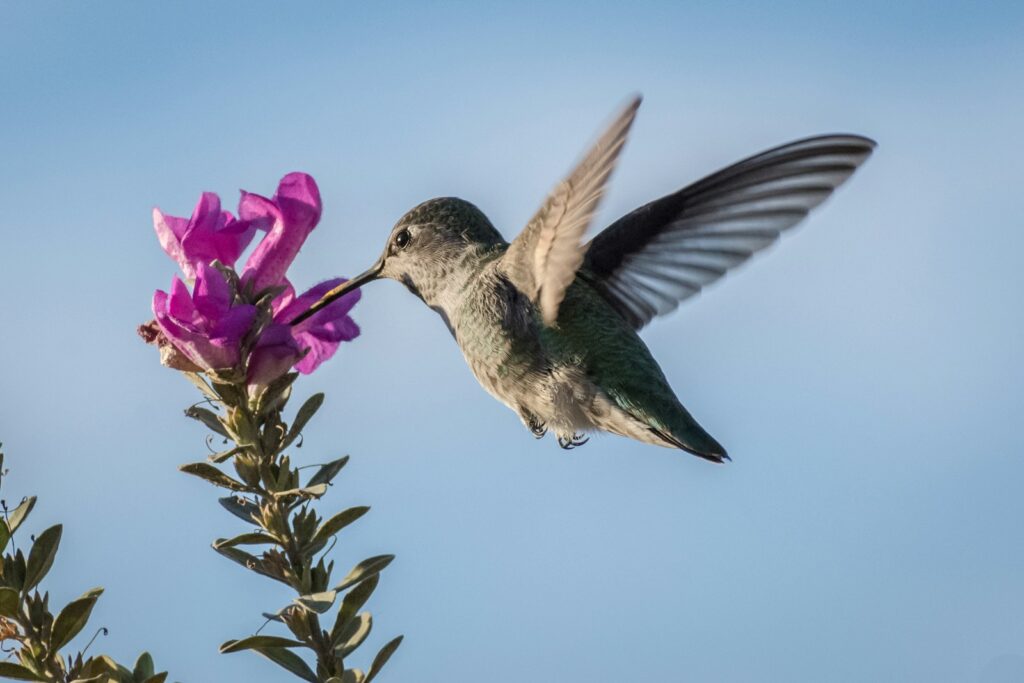
Northern California’s Redwood National and State Parks complex offers a subtler but no less magical spring wildflower experience as sunlight filters through the world’s tallest trees to illuminate the forest floor. From March through June, these ancient forests showcase spectacular displays of trillium, rhododendron, azalea, and the delicate redwood sorrel that carpets vast areas with its clover-like leaves and pink-striped white flowers. Unlike the sweeping meadow displays of other parks, Redwood’s wildflower experience feels more intimate—visitors discover botanical treasures amid fern-draped groves where shafts of light create spotlight effects on blooms against the rich brown backdrop of redwood needles and towering trunks. The Lady Bird Johnson Grove and Prairie Creek’s Rhododendron Trail offer particularly rewarding spring experiences, with the latter showcasing stunning pink rhododendron blossoms that can reach 30 feet high in the understory beneath the giant trees. The coastal sections of the park complex host entirely different plant communities, including seaside daisy and wild strawberry, allowing visitors to experience multiple ecosystems and bloom seasons in a single day.
Planning Your Wildflower National Park Adventure
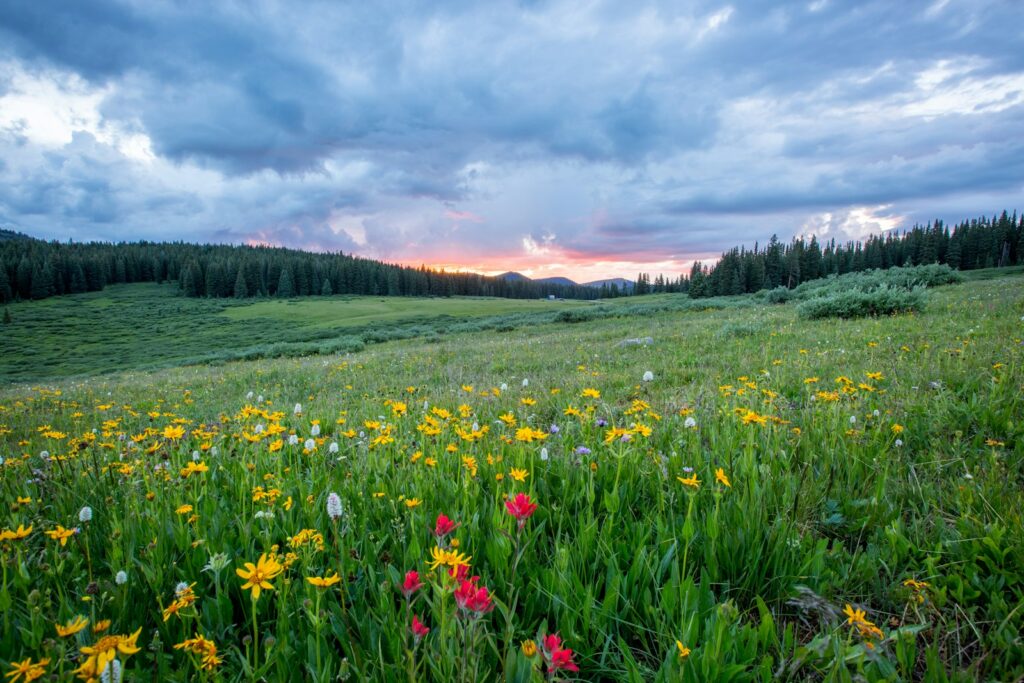
Successfully timing a national park wildflower trip requires understanding how weather patterns, elevation, and geography affect bloom progression. Most parks maintain wildflower hotlines or website updates during peak season, while social media groups often share real-time reports from fellow enthusiasts. Consider building flexibility into travel plans—arriving a week before predicted peak blooms allows for adjustments if the season runs early, while scheduling a multi-region trip provides insurance against localized weather disappointments. Pack proper equipment including polarizing filters for photography, field guides for identification, and binoculars for detailed observation without trampling sensitive habitats. Responsible viewing ethics are essential: stay on established trails, resist picking flowers (which is illegal in national parks), and avoid creating social trails through meadows even for photographs. For the most rewarding experience, slow down and engage deeply—spend time observing the intricate relationships between flowers and their pollinators, how light changes color perception throughout the day, and the fascinating adaptations that allow these plants to thrive in challenging environments.
Conclusion
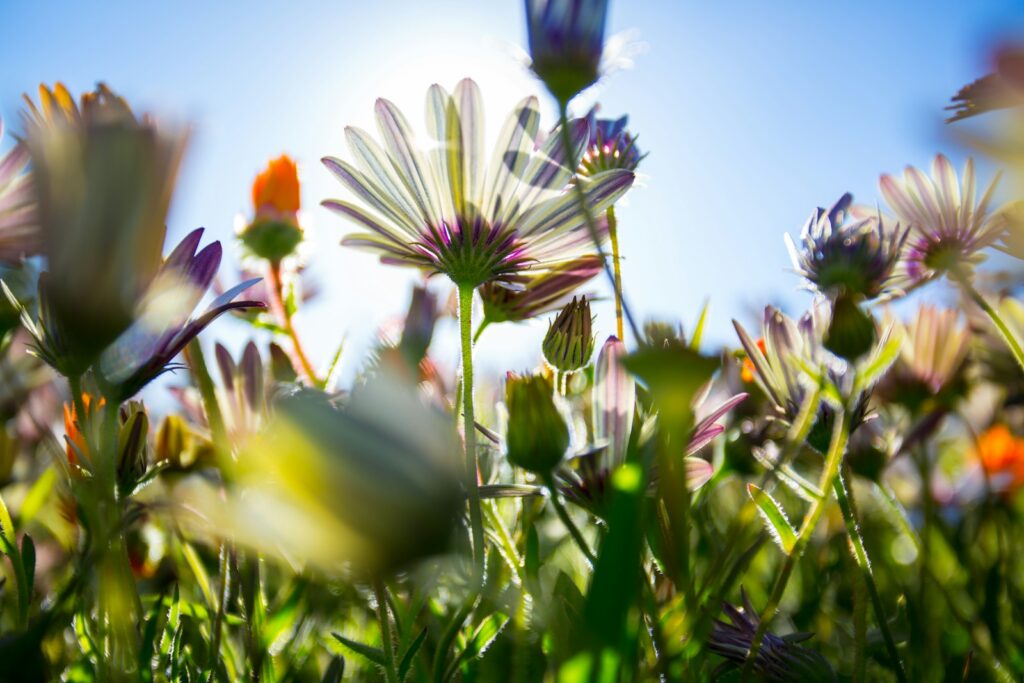
America’s national parks offer extraordinary opportunities to witness spring’s botanical rebirth through wildflower displays that range from desert superblooms to alpine meadow tapestries. These floral exhibitions do more than delight the senses—they provide windows into complex ecosystems, evolutionary adaptations, and the delicate balance that sustains biodiversity. As climate change alters traditional blooming patterns, visiting these displays takes on new significance, allowing us to witness ecological transitions in real-time. Whether you seek the dramatic orange horizons of California’s poppy fields, the delicate ephemeral beauty of Appalachian forest floors, or the compressed intensity of alpine gardens, these wildflower experiences connect us to seasonal rhythms and natural wonder. In protecting these landscapes for future generations, we preserve not just scenic beauty but the intricate relationships that sustain the spectacular springtime rejuvenation that has inspired humans throughout history.

